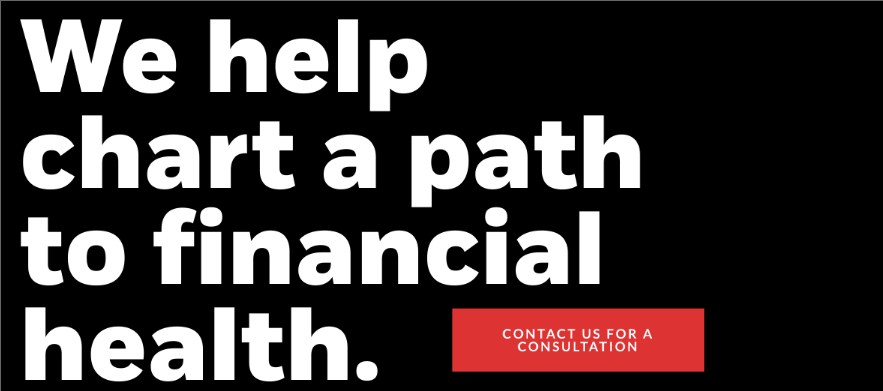2023 Year-End Tax Planning Topics and Strategies For Business Owners
Its that time of the year again, here are the top 2023-year end tax planning strategies for business owners.
2023 has been another year of challenging economic turbulence, marked by recession fears, tight labor markets, and persistent inflation. Businesses are increasingly focused on mitigating rising interest rates to manage borrowing costs. As the calendar turns, tax planning takes center stage. This year, it’s more crucial than ever. 2023 presents a unique confluence of factors shaping your year-end strategies:
- New workplace realities: Hybrid and remote work models require adjustments to deductions, benefits, and compliance considerations.
- Tax landscape shifts: The Inflation Reduction Act and expiring pandemic-relief measures necessitate a recalibration of your tax strategy.
- Last chance for optimization: 2023 is your final opportunity to make adjustments that impact your 2024 tax return.
This year, however, the landscape is more complex than ever. With hybrid work models solidifying, the lingering impact of the pandemic, and some significant tax changes looming from the Inflation Reduction Act and the expiration of COVID-relief measures, your year-end planning needs to be sharper than ever.
Here’s a quick overview of the current tax landscape in the US 2023 tax filing year:
Individuals:
- Income Tax: Your top rate depends on your earnings, reaching 37% at the highest bracket. Plus, high earners might face an additional 0.9% Medicare tax.
- Investments: Different rates apply to long-term capital gains and qualified dividends: 0%, 15%, or 20%. But watch out for the 3.8% Medicare surtax on your net investment income.
- Business Perks: Businesses benefit from generous expensing and depreciation rules, and non-corporate entities can leverage the qualified business income deduction.
Corporations:
- Flat Rate: Companies have a consistent 21% tax rate on both ordinary income and capital gains.
This 2023 year-end tax planning article will cover tax topics such as crucial IRS updates, ownership reporting, enforcement changes, and more.
The CPA Firm Bakertilly published a 70-page tax letter if you want to dive deep into enterprise-level tax issues.
Post-TCJA planning and projected 2024 bracket changes
Get ready for a significant shift in individual taxes starting after 2025. Unless Congress intervenes, critical provisions of the Tax Cuts and Jobs Act (TCJA) will expire, impacting your tax bill. Here’s what to expect:
Big Changes:
- Top Tax Rate Returns: to 39.6% for high earners ($553,600+).
- Qualified Business Income Deduction: Say goodbye to the 20% deduction on business income.
- State & Local Tax Deduction: The $10,000 cap is lifted, allowing the full deduction.
- Personal & Dependent Exemptions: These deductions return, offering additional tax savings.
- Standard Deduction: Prepare for a significant cut, almost halving its current value.
- Child Tax Credit: Expect a reduction in the credit amount.
- Alternative Minimum Tax (AMT): Exemptions and phase-outs revert to stricter pre-TCJA levels, pushing more taxpayers into AMT territory, especially with the SALT cap removal.
Inflation Adjustments:
- Tax brackets and thresholds will automatically adjust for inflation, potentially increasing your tax liability during periods of high inflation.
- Section 199A deduction, excess business loss threshold, and Social Security wage base are also affected by inflation adjustments.
- Final adjustments might be released later than usual due to current price volatility.
The Takeaway:
Significant changes are coming to individual taxes in 2026. Stay informed, consult a tax professional, and plan to minimize the impact on your finances. I wrote about the projected 2024 tax-bracket changes last month.
How the IRS is changing tax enforcement with increased funding
Expect more targeted audits and investigations, particularly for high-income individuals, large corporations, and complex partnerships. They’re also beefing up their tech arsenal with advanced data analytics and automation tools to identify discrepancies and potential non-compliance.
The IRS is flexing its muscles and ramping up audits under the CPAR regime, shifting the burden of proof and potential penalties onto your shoulders. Here’s what you need to know:
No More Handholding: Forget the days of the IRS chasing down individual partners. Under CPAR, if they find an underpayment at the entity level, they can assess the full tax penalty at the maximum individual rate. It’s your responsibility to prove a lower rate and decide who pays – the partnership or the individual partners.
Areas of Focus: Be especially vigilant in these key areas:
- Basis Recalculations: Are your partnership’s ownership interests accurately reflected?
- Depreciation Adjustments: Are you claiming deductions correctly?
- Purchase Price Allocations: Did you fairly split the cost of acquired assets?
- Debt Issues: Are loans to partners properly documented and justified?
- Substantial Economic Effect: Does your profit-sharing agreement reflect the true economic contributions of each partner?
The takeaway:
- Stay compliant: Familiarize yourself with your tax obligations and deadlines to avoid penalties.
- Maintain accurate records: Keep detailed records of all business transactions and supporting documents.
By being aware of the IRS’s evolving enforcement strategies and taking proactive steps to comply, businesses can avoid costly penalties and ensure smooth tax filing.
Coordinating with remote employees
The rise of remote work has thrown a curveball at tax authorities. Your home-based employees could be anywhere, potentially triggering new tax obligations for your business. Here’s the lowdown:
Payroll Taxes:
- State Concerns: Depending on employee location and agreements between states, you may need to register and withhold payroll taxes for their state.
- Moving Target: If your employee hopscotches states, like skiing in Utah for a month, you might need to collect payroll taxes for each location.
Other Potential Responsibilities:
- Licenses and Permits: Certain states require business licenses and permits for remote employees working within their borders.
- Corporate Income and Sales Taxes: Your business might owe income and/or sales taxes to other states based on the work performed by your remote employee there.
Recommendations for Businesses with Remote Workers:
- Seek Expert Guidance: Consult a tax professional to navigate the complexities of multi-state taxation for remote employees.
- Track Location: Keep detailed records of your employees’ work locations throughout the year to comply with changing tax obligations.
- Review Agreements: Understand any existing agreements between your business state and the states where your remote employees reside.
- Proactive Communication: Maintain open communication with your remote employees about the potential tax implications of their work locations.
Failing to comply with multi-state tax laws can lead to penalties and fines. By proactively managing your remote workforce’s tax situation, you can avoid headaches and ensure smooth sailing for your business.
Nexus Local State Taxes: ak Doing Businesses In Multiple States
We have seen and will continue to see the expansion of economic nexus principles and related interpretations by the states. Businesses doing business in multiple states, need to be aware. Your state tax footprint might be more significant than you think. It’s time for a “sanity check” to ensure compliance and avoid penalties.
Here’s why:
- Nexus Rules Evolving: Modern technology and remote work blur state lines, making “nexus” (sufficient connection to a state for tax purposes) more complex than ever. Your seemingly harmless activities could trigger tax obligations in other states.
- Don’t Get Caught Unaware: Ouch! Penalties and interest can bite hard if you’re not compliant.
But there’s good news!
- Voluntary Disclosure Agreements (VDAs): Most states offer VDAs, allowing you to come clean and avoid harsh penalties – as long as you haven’t been contacted by the state yet.
- Amnesty Programs: Occasionally, states offer broader amnesty programs, but they’re not guaranteed and often come with additional penalties for non-participation.
Key Takeaways:
- Review your business activities: No matter how small, analyze their potential impact on state tax obligations.
- Stay informed: Technology opens doors for business, but also expands state tax reach. Be aware of evolving rules and regulations.
Review Your Retirement Plan Options
The end of the year is an ideal time for companies to provide bonuses or retirement contributions to their employees and potentially receive tax breaks on these funds. Take advantage of opportunities to save significantly and reduce your current tax burden! For An article published by KeyBank mentions that “self-employed individuals, a simplified employee pension (SEP) individual retirement account (IRA) can be funded with 20% of self-employment earnings to a maximum of $66,000 for 2023.” Here’s how to make the most of your retirement plan before the year ends:
Maximize Contributions:
- Don’t leave money on the table: Fully fund your contributions or at least reach the company match limit to maximize tax deductions and employer benefits.
- Tax-free future vs. now: Consider a Roth option if you expect higher tax rates in retirement. Though you lose the current deduction, withdrawals in retirement won’t be taxed.
- Hedge your bets: Diversify your portfolio with both taxable and Roth accounts to navigate future tax uncertainties.
Business & Employee Perks:
- Bonus time: Offer year-end bonuses or retirement contributions to employees, enjoying potential tax deductions for your business.
- Maximize owner contributions: Explore plans like solo 401(k)s, SEPs, or profit-sharing to maximize your pre-tax contributions and lower your company’s taxable income.
Remember:
- Seek professional advice: Consult a tax advisor to navigate the complexities of retirement plans, including the SECURE Act updates, and choose the best options for your situation and business structure.
- Deadlines vary: Pay attention to year-end deadlines for SEP contributions and plan establishment, but solo 401(k)s offer more flexibility until your tax return due date.
Leverage the Pass-Through Business Income Deduction
The qualified business income (QBI) deduction, introduced in the 2017 Tax Cuts and Jobs Act, allows pass-through entities like partnerships, S corporations, trusts, and estates to deduct up to 20% of qualified business income through 2025. Eligibility depends on the taxpayer’s total taxable income and whether the business is classified as a specified service trade or business. For 2023, specified service businesses can claim the QBI deduction if taxable income is under $182,100 for single filers or $364,200 for joint returns.
Critical planning considerations for the QBI deduction include managing taxable income through timing strategies that accelerate deductions or defer income. Businesses not classified as a specified service trade or business must also evaluate the wage and capital limitation rules that can reduce the allowable deduction.
To reduce taxable income below the threshold amount consider:
- Making pension plan contributions.
- Increasing payroll.
- Accelerating business expenses.
- Recognizing losses.
- Avoiding recognizing gains.
- Making charitable contributions.
Consider Deferring Income and Expenses
Are you wondering how to optimize your upcoming tax bill? It all boils down to when you earn your income. An article in ADP suggests that you can adjust your earning timing for potential tax savings:
Pay Less Later:
- Cash is King: If you use the cash accounting system, consider delaying sending out invoices for some December work until January. This counts the income towards next year’s return, potentially lowering your current tax burden.
- Delayed Gratification: For accrual accounting, hold off on shipping some orders or finishing projects until January. This postpones recognizing the income and might give you a tax break.
Boost This Year’s Deductions:
- Use it or Lose it: Got unused deductions? Accelerate your efforts to utilize them before the year ends. Send out invoices early or finalize projects to claim those deductions and reduce your current tax liability.
Remember:
- Consider materiality and potential penalties before implementing any income deferral strategies.
Conclusion
Year-end is a busy time for business owners for many reasons. Take proactive steps to:
- Analyze your current tax situation: Assess your deductions, credits, and potential liabilities in light of the changing landscape.
- Explore new opportunities: stay current on the latest tax laws and identify potential deductions or credits you may have overlooked.
Proactive year-end tax planning can significantly impact your company’s bottom line. Take advantage of this crucial opportunity to maximize your savings and ensure compliance in the ever-evolving tax landscape. If you have any questions, feel free to contact Huckabee CPA for a free consultation.












